There is no shortage of online writing prompts. Hell, I was gifted a set of special “story cubes” to define a random trio of people, places and objects. But I’ve found a more reliable approach. The grocery store. It has never failed to provide a writing prompt.
My recommendation: Wander the aisles of a well-stocked grocery store with your curiosity on high alert. This approach is ideal for writers with an affection for humor, quirkiness, irreverence and above all curiosity. That describes a good chunk of us, doesn’t it?
My routine visits to the grocery store are purpose-driven, a list in hand, no dawdling, no impulse purchases, I’m in and out. The writing prompt visit is a leisurely stroll with no particular agenda. I cruise through the aisles, check out creative marketing strategies and note new and possibly improved products. This system has never failed to spark my curiosity.
Here is what I gleaned today at Whole Foods. I spotted an aisle labeled, “Meat Alternatives,” and wondered how this category was marketed. I recalled my confusion at a proudly self-proclaimed vegan restaurant whose menu listed calamari. “How can calamari be on the menu?” I asked the waiter.
“Oh, our calamari is actually deep fried mushrooms”
“Well why don’t you call it deep-fried mushrooms? Shouldn’t you be celebrating your vegan-ness, not trying to hide it?” The waiter shrugged his shoulders.
Would the products in the grocery store also try to dissemble?
I focused on chicken and spotted several creative and contrived ways to simultaneously establish that the product was a chicken stand-in without flagrantly mislabeling the product.
·Misspell chicken
I spotted packages labeled as “chick’n” or “chik’n” or even more creatively “chiqin.” If you don’t correctly spell the word, you have no responsibility to correct the common error that the buyer anticipates a product that was once a feathered and clucking creature.
I spotted Crab misspelled as Cr’b with similar effect.
Don’t use any version of the word chicken in your labeling.
Use the word nugget, tenders or wings, which have become stand-ins for chicken, thanks to pervasive advertising by the fast-food restaurant industry. The label may not reference chicken, but the message is clear.
Dissemble creatively
Go ahead and say “Not Chicken,” but use a picture that is a dead ringer for a chicken patty from a fast-food joint, making it clear that the label is (Ha Ha!) just kidding. Adding “zero clucks” to the label emphasizes the humor point.
Confuse the issue
Describe your Chicken Nuggets as Meat from Plants. What? The FDA and the USDA define meat as food that comes from an animal carcass. So maybe the headliner “Impossible” is an accurate assessment.
Either the product is misbranded or “meat from plants” describes the bizarre experience of eating a Venus Fly Trap (or other carnivorous plant) with a coincidentally trapped animal, i.e. a fly, spider, cricket or slug. Yum.
Some labels defied explanation.
Simulate Chicken Nuggs
I’m all for simulated flight training as a necessary part of pilot education, but why would you ever use the word simulate to describe food? Why invite the consumer to assume your food is fake?
The picture on the box – a hand offering a nugget to a rooster – is equally confusing. At first glance, it looks like the hand is encouraging the rooster to go cannibal and have a nibble of its own kind. The only way this picture makes sense is the implication that even a chicken could enjoy this plant-based nugget. It’s not chicken, it’s chicken food.
Daring. Plant Based Chicken
The basic marketing strategy for plant-based alternatives focuses on lulling the consumer into thinking they are eating chicken. The title Daring (with a period added for emphasis) suggests the opposite, that the consumer needs to think out of the box and take a chance on this product.
All packages contain some version of the message “plant-based.” State regulations vary, but many now prohibit the use of the word “meat” if the protein is not derived from an animal carcass, which would include chicken. Adding the word plant-based appears to be the workaround.
However, the legitimate poultry industry is not happy about plant-based alternatives co-opting their identity. The FDA regulations regarding crabmeat are a cautionary tale, requiring the label “imitation crabmeat” to describe the faux crabmeat (complete with a stripe of orange dye) that you will find on the label of your store-bought tray of sushi. The FDA stated that “a processed and blended seafood product made primarily with fish protein that is a substitute for crabmeat, resembles crab meat, and is nutritionally inferior to crabmeat, must be labeled “imitation crabmeat.”
What a disaster for the alternative chicken industry if the FDA required “imitation chicken” labeling.
It’s time for the industry to distance itself from the category of “meat alternatives.” Create a separate identity. The principle ingredient of plant-based “chicken” is soy protein so I propose an industry-wide line of “Soyful” products. As long there is no mention of chicken, there could be Soyful nuggets, tenders, and various pieces of anatomy - breasts, thighs and wings.
As always, my advice is free.







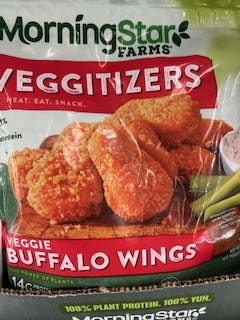
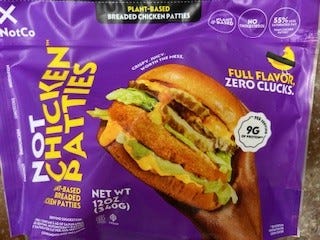
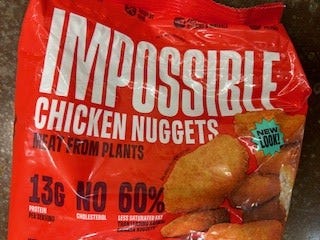
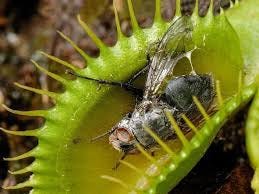
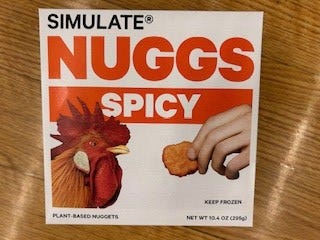
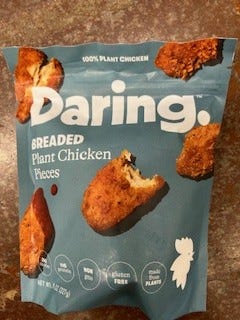

How about an aisle labeled "Not what it appears to be."
What I need in the grocery store are some imitation Brussels sprouts and imitation okra that are actually made of chicken. Where is the "veggie alternatives" aisle?